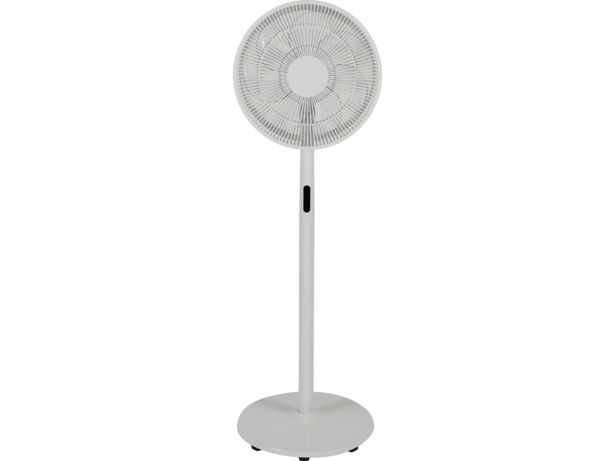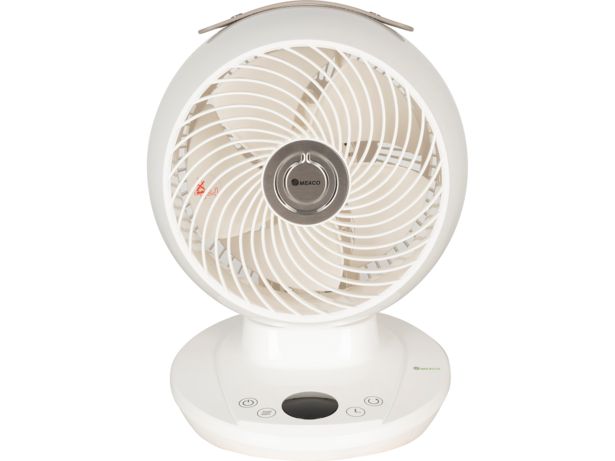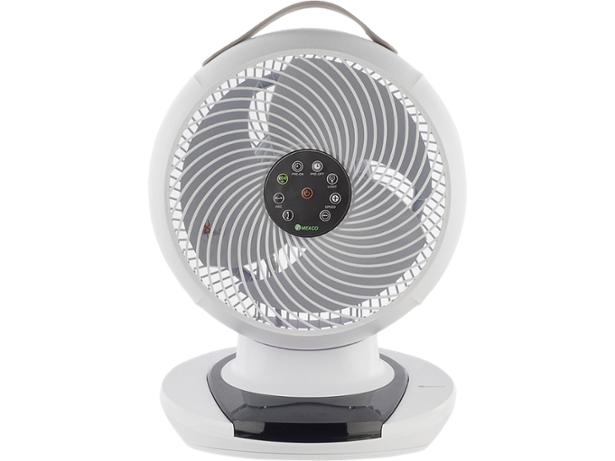How we test electric fans

A refreshing breeze from a reliable electric fan can be the perfect remedy to a stuffy room. Our independent lab tests will help you avoid buying an electric fan that simply isn't good enough.
Keep reading to find out how we sort the best electric fans from the worst. Alternatively, you can head straight over to our electric fan reviews.
Be inspired to make home improvements. Sign up for our Home newsletter – it's free monthly
Why our electric fan tests are different
Many free-to-access websites review electric fans using a single tester, with scores generated based on that individual's preferences. These same sites may also receive electric fans free of charge, directly from manufacturers.
Which? market-leading electric fan tests are different. Our scientific test scores are based on measurements and ratings supplied by a full team of experts at our lab, ensuring there is no room for unconscious bias when giving an overall rating.
We buy every electric fan that we test, we never accept free samples from PR companies or manufacturers.
Browse our full selection of electric fan reviews to find the perfect model for you.
How is the Which? test score for electric fans calculated?
The total test score for each electric fan is shown as a percentage.
When we calculate the total score, we don't take price into account. That means that every electric fan passing through our lab is tested on the same scale, making it easy to compare models on your shortlist.
Our lab tests are divided as follows:
- Performance: 65%
- Ease of use: 20%
- Features: 5%
- Construction quality and stability: 5%
- Power consumption: 5%

What are Which? Best Buys, Don't Buys and Great Value Models?
Only the electric fans that earn top marks in our lab tests are worthy of Which? Best Buy status. If you're buying a Which? Best Buy electric fan, you know for certain that the fan is easy to set up and will make a claustrophobically stuffy room more bearable.
To become a Which? Best Buy, an electric fan must achieve a total score of 70% or higher.
Electric fans that receive a poor score of 45% or lower are Don't Buys and should be avoided – they won't provide a comforting breeze, they're likely to be very noisy and may be difficult to use.
Great Value models do pretty well in our tests – they need to score at least 60% or more for their rating. They're also at least 20% cheaper than the average cost of other electric fan types (desk, tower or pedestal) in our tests.
The Great Value models highlighted by our experts are the ones to go for if you're looking for a bargain – and we've applied the Great Value rating based on the average price of each type, as we know desk fans are often much cheaper than tower fans. Some Great Value models also score well enough to be a Best Buy.
Our key electric fan testing criteria
Below are the key testing categories and how we evaluate each one. Our expert tests cover desk fans and floor (pedestal and tower) fans.
Performance
The performance score is key in determining whether or not an electric fan is good enough to be a Which? Best Buy. Our overall performance score incorporates a number of tests:
- We test each fan's full range of air speeds using an anemometer. It's great to see a fan with a large number of air speeds to pick from, as it gives you more freedom to tailor the air flow to your environment and preferences. But it's also important that there's a decent range of air speeds between the highest and the lowest. A fan might have lots of different speeds but they might all be at the gentle, medium or strong end of the spectrum, for example.
- When measuring maximum fan speed, we also look at how well the fan ventilates a room with cool air from outside (if you place it near an open window).
- To assess how pleasant (quiet and cooling) a fan is, we use a panel made up of five experts. Members of the panel test electric fans in a warm environment (at least 25°C), around two metres from the product.
- We also record the amount of noise a fan makes at its lowest and highest setting, and at the setting that's most comparable across all tested models. Noise is measured in a semi anechoic chamber to make sure you don't end up buying a fan that sounds like the engine of a Boeing 747.
Ease of use
After assembling an electric fan in our test lab, we make notes on the usefulness of the instruction manual and how much of a chore the setup process proved to be.
Once the electric fan is turned on, we review the accuracy and effectiveness of any remote controls that come bundled with the product.
We also assess how easy the fan is to use on a daily basis, based on its typical functions, settings and displays. We check to see how accessible the control switches are and how easy it is to adjust oscillation.
Electric fans that score well for ease of use are also a breeze to clean.
Features
Our features score checks what useful features a fan has, including the number of speed settings available, oscillation, built-in timers and remote controls.
Power consumption
Nobody wants to buy an electric fan that wastes electricity.
With that in mind, we measure power consumption at each fan's lowest and highest speeds and at the speed that's most comparable across all tested models. Our lab experts also look at additional power consumption caused through oscillation.
We also evaluate power consumption with the fan switched off and in standby mode.
Construction quality and stability
The best desk fans and floor fans that have passed through our test lab are very stable. You can set them up and walk away without worrying about them tumbling over.
To make sure you're getting the best electric fan for your money, we assess build quality and check whether the fan is made from sturdy stuff or cheap, fragile plastic.
When scoring construction quality and stability, we focus on the amount of force (and tilt) needed to tip the fan over. After these tests are finished, we check how much damage has been sustained by the fan.
Test weighting for desk fans vs tower fans
Our electric fan tests include two types of fan:
- Desk fans – as their name suggests, these small fans are designed to be placed on a desk or table and create a refreshing breeze for those sitting nearby, without blowing papers all over the place.
- Tower or pedestal fans – these are taller fans that are placed on the floor and are usually more suitable if you're looking for a fan to cover an entire room.
While the top-level test categories we assess for both types of fan are identical (as outlined in the chart above), within each category we may weight some elements slightly differently based on how each fan type is intended to be used.
For example:
- Having a remote control is likely to be less important for a desk fan than for a tower fan, so we give a lower weighting to this for desk fans.
- A fan's stability is more likely to be important for taller tower fans than for more compact desk fans, so we give a higher weighting for this to tower and pedestal fans.
Because of this, while very similar, the scores for desk fans vs tower/pedestal fans are not directly comparable.
Where a fan can extend and collapse to act as either a pedestal fan or a desk fan, we evaluate it as a pedestal fan.
Electric fan safety checks
Of course, we would never recommend a fan that isn't safe to use. If our tests raise concerns about safety, we will limit the score a fan can achieve, and – depending on the seriousness of our concerns – may make it a Don't Buy.
We note down:
- Risk of injury when assembling or using the fan – for example the risk posed by exposed, sharp edges.
- Whether or not fingers can pass through the fan's cover – this is important to know, particularly if you have younger children.
- If there is a risk that hair will be drawn into the rotating rotor – a particular concern for those with longer hair.
- What happens when there is a blockage – some models will automatically turn off when a block is detected.
- Electrical safety – we check electrical safety, which covers protection against electric shocks, mains connections and external cables.
Pick the perfect electric fan with Which? reviews
Without checking our reviews, you risk buying an electric fan that's a pain to set up and use and won't do its job effectively. And, as our expert reviews prove, spending big doesn't guarantee you a quality product.
Which? test scores compared
- Lowest test score: 41%
- Average (mean) test score: 62%
- Highest test score: 79%
Browse our full selection of electric fan reviews to the perfect model for you.























